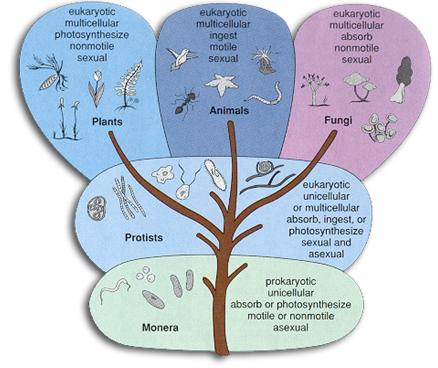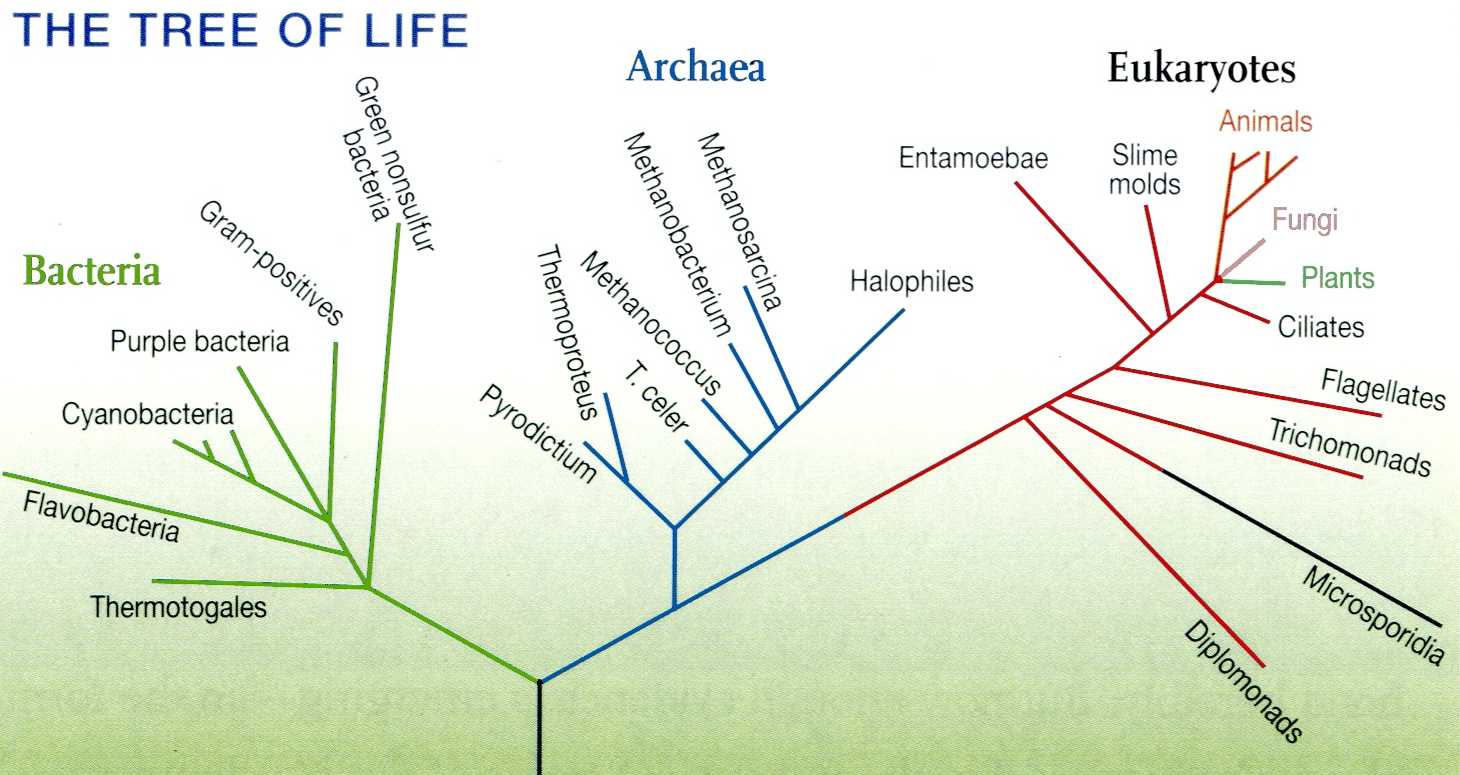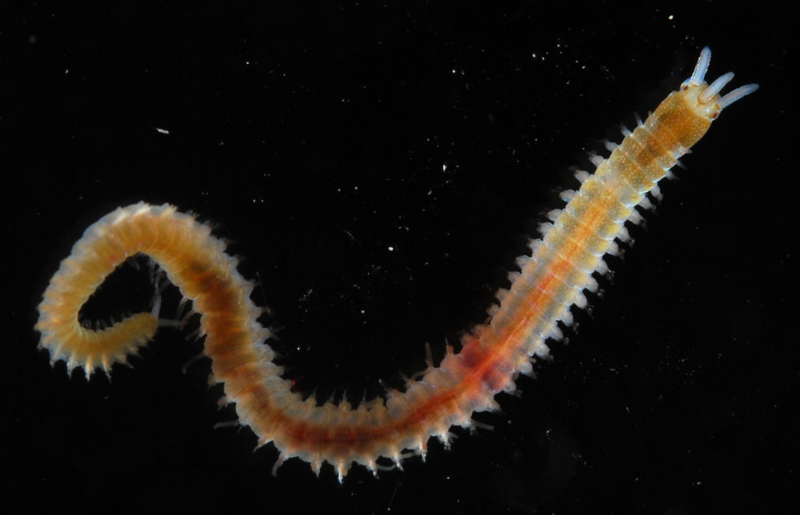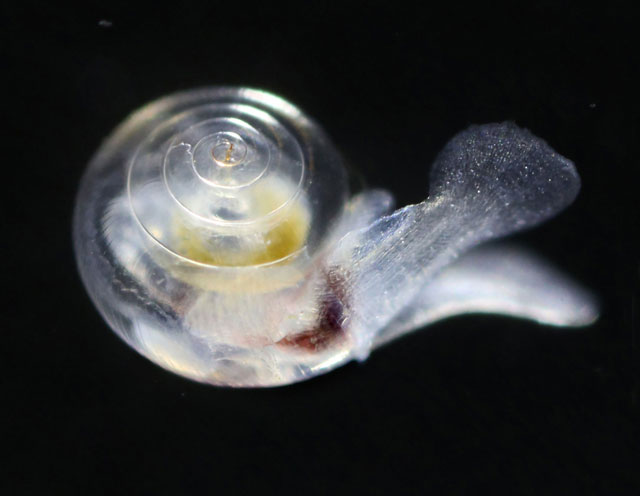| Dept of Biology, Lewis and
Clark College |
|
Dr Kenneth Clifton
|
| |
Biology
221 Lecture Outline
|
|
An introduction to life in the sea: one important set of "little stuff": microbes, phytoplankton and zooplankton
Why are microorganisms important?
Very abundant
Primary producers
Nitrogen fixation
Who are we talking about?
Among the "Monera" or Prokaryotes:
Bacteria
Heterotrophs (mostly decomposers)
Autotrophs: photosynthesis and chemosynthesis
Cyanobacteria (formerly "blue-green algae)
Archaea
More decomposers: methane producers
Hydrothermal vent populations
In the Eukaryotes: Protista (phytoplankton and protozoans)
Unicellular algae: an essential component of "the plankton"
|

Five Kingdoms

Three Kingdoms |
Recent attempts to census the diversity of microbial populations in the oceans reveals an amazing diversity and abundance of life
Plankton are "drifters"
basically too small to swim against
the ocean's currents (though local movements over shorter
distances are possible.... many can swim).
"Plankton" it is a very general term that
encompasses a wide variety of organisms... from microscopic plants
and animals up to colonial siphonophores a third of a meter
across.
Plankton are a central feature of life in the
oceans, forming the base of virturally all food webs:
Thus, their location in time and space
determines the distribution and abundance of many other
creatures.
Defining "plankton" in terms of:
Energy source
Phytoplankton are
photosynthetic protists and plants
Zooplankton are planktonic animals
that consume phytoplankton or other zooplankton
Mixoplankton can photosynthesize
and consume other plankton (some protists)
Life History
Holoplankton spend their
entire lives drifting in the open sea.
Meroplankton: planktonic early
life-history, then benthic as an adult (many multi-cellular organisms)
Location
Neuston are plankton
associated with the surface
Pleuston are plankton that are at (some cyanobacterial mats), or even extend
above (like some siphonophores), the water's surface
Size
Picoplankton (< 2
µm)
Ultraplankton (2 - 5 µm)
Nanoplankton (5 - 20 µm)
Microplankton (20-200 µm)
Macroplankton (200-2,000
µm)
Megaplankton (> 2,000
µm)
Keeping close to the surface is critically
important for plankton.
Phytoplankton require the sun's energy
for photosynthesis
Zooplankton need phytoplankton and other
zooplankton to eat
Ways that plankton can avoid sinking below
the surface
Active processes: (dead material typically
sinks must faster than living)
Reduced density: gas, lighter organic
compounds like lipids (note: lift from buoyancy diminishes with depth)
Swimming: very small plankton can't, but
microplankton and larger can: have to know which way is
up
High surface area to volume ratios (lots
of drag): lots of elaborate structures that probably
help
Water turbulence tends to re-suspend
plankton
Some important types of
phytoplankton (be sure to check out the cool images in your text)
Diatoms: (Phylum Bacillariophyta)
Dominant in temperate and polar
waters
Silica case or shell (frustule) looks like a "pill
box"
Found singly or in chains
Planktonic forms are radially
symmetrical
Can reproduce very quickly, up to 6x/day
via asexual reproduction (also have sexual
reproduction)

Dinoflagellates (Phylum Dinoflagellata or Pyrrhophyta)
Dominant in tropical and
subtropical waters.... also summer in temperate areas
they have two flagella and a shell of
cellulose plates (called theca)
Asexual reproduction and fast population
growth can lead to "red tides"
They secrete a neurotoxin called
saxitoxin: bioaccumulates in shell fish and other filter
feeders... can be fatal
Zooxanthellae are dinoflagellates: more when we talk about cniderians
(corals).
Coccolithophores (Haptophyta)
Tropical... often very
common
Calcium carbonate shells or
"tests"
Their skeletons make important
depositional structures, but "naked" forms are not
preserved
Silicoflagellates (Chrysophyta)
Biflagellated, silica internal
skeleton... found world wide, particularly in Antarctic
Green Algae (Chlorophyta)
Not common except in lagoons and
estuaries... often associated with coastal pollution
Cryptomonad Flagellates (Chryptophyta)
have chlorophyll a and c... adapted
for turbid waters
Protozoans
Some important types of protistan
plankton
Ciliates
(Ciliophora)
Foraminifera (Foraminifera)
Radiolaria (Polycystina)
Plankton patches and "blooms"
Some important types of multicellular zooplankton
Crustaceans:
Copepods
Krill
Cladocera
Mysids
Ostracods
Jellies
Coelenterates (True jellies,
Man-of-wars, By-the-wind-sailors)
Ctenophores (comb jellies)
Urochordates (salps and
larvacea)
Worms (Arrow worms, polychaetes)

Pteropods (planktonic snails)

An indicator species for acidification effects
Factors that bring plankton together or spread
them apart
Physical properties that plankton
detect (e.g. light, temperature, salinity)
Water currents and turbulence
Langmuir circulation
Eddies
Other currents
Consumption by predators
Reproduction
Aggregating behaviors
Vertical migration by zooplankton
Hypotheses
Light
Feeding on phytoplankton
Predator avoidance
Energy conservation
Surface mixing
Back
to the Marine Biology Moodle Page




